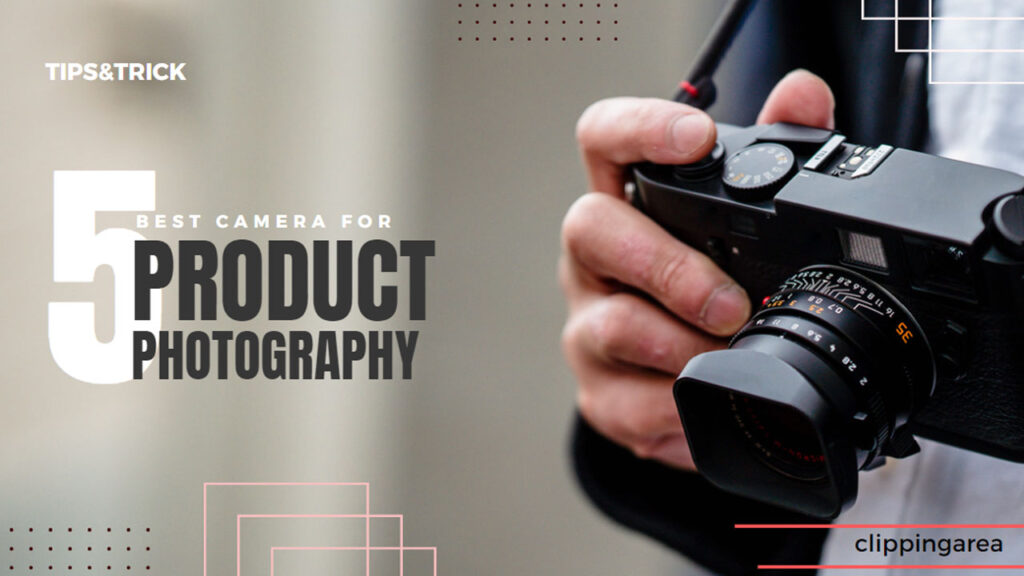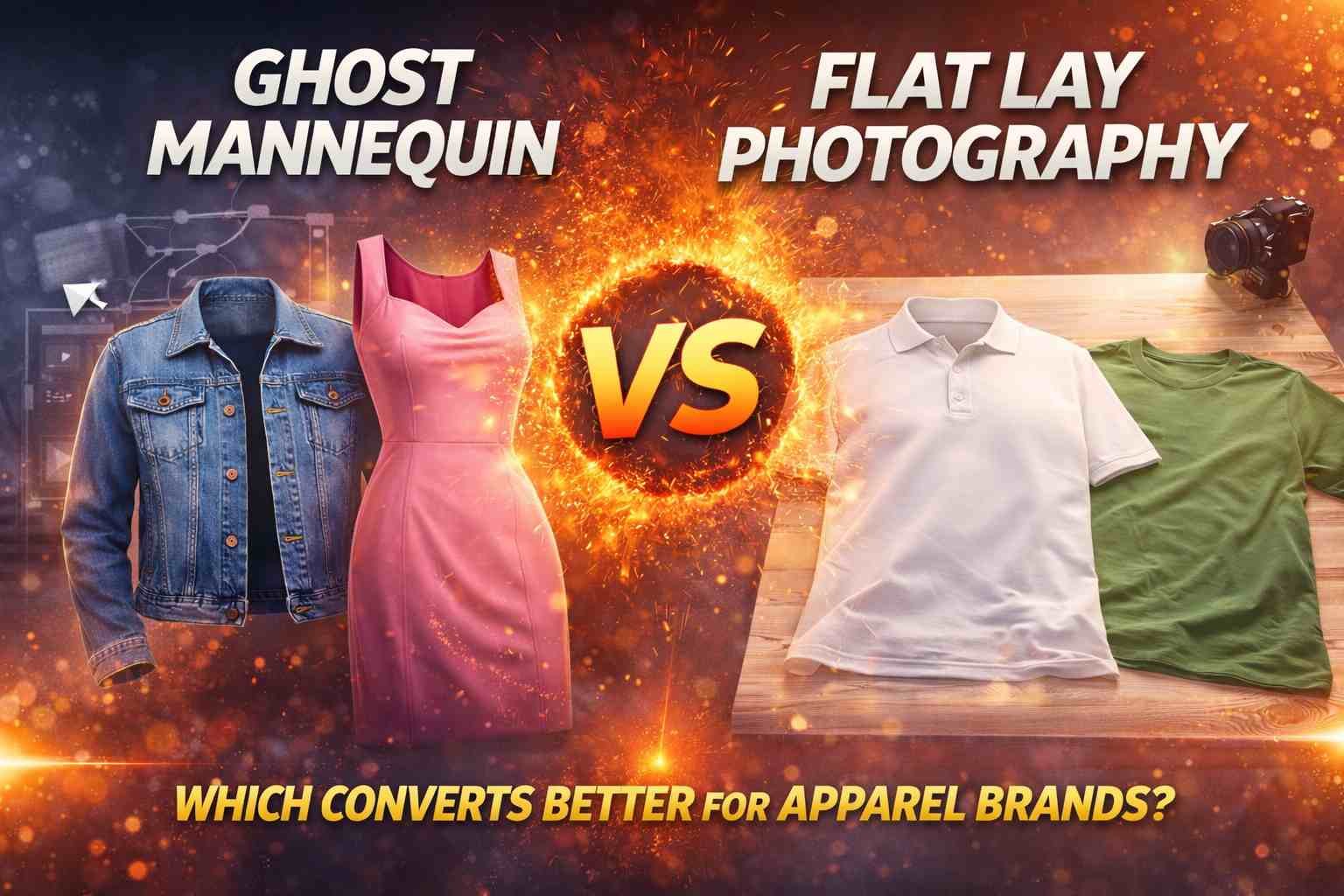Choosing the best camera for product photography is really difficult. Because you can’t understand which one is good and which one is bad among different brands of cameras in the market.
But after reading this article I can guarantee that you will select the best quality camera for product photography.
So, In this Article, I will share how to choose the best camera for product photography in 2024.
Let’s start,
What is Product Photography and Why is it Important?
Product photography is a specialized field of commercial photography that focuses on capturing high-quality images of products for marketing and promotional purposes.
The primary goal of product photography is to showcase products in the best possible way, highlighting their features, details, and overall aesthetics. These images are often used in various marketing materials, such as e-commerce websites, print catalogs, social media, advertisements, and more.
Learn More: Best Camera for Dental Photography
Importance of Product Photography:
First Impressions Matter: When potential customers browse through products online or in catalogs, the first thing they notice is the product image. High-quality product photography creates a positive and professional first impression, which can influence a customer’s decision to explore more about the product.
Visual Communication: Product photos serve as a visual communication tool, conveying important information about the product, including its design, color, texture, size, and functionality. This is especially crucial for online shoppers who cannot physically interact with the product before making a purchase.
Builds Trust: Clear and detailed product images help build trust with customers. When shoppers can see the product from different angles and get a sense of its quality through images, they are more likely to trust the seller and make a purchase.
Brand Representation: Consistent and high-quality product photography contributes to a cohesive brand identity. The visual representation of products should align with the overall brand image and convey a sense of professionalism and reliability.
Increases Sales: Compelling product images can significantly impact sales. When customers can clearly see the features and benefits of a product, they are more likely to be convinced of its value, leading to increased conversion rates and sales.
Differentiates from Competitors: In a competitive market, visually appealing and unique product photos can help a brand stand out from its competitors. Highlighting the distinct features of a product through photography can attract the attention of potential customers.
Enhances Marketing Efforts: Product photos are essential for various marketing channels, including online platforms, social media, email campaigns, and printed materials. Well-executed images can be easily incorporated into different marketing strategies, making the overall marketing effort more effective.
Learn More: Top 10 Sony Camera for Real Estate Photography
Types of Cameras & How To Choose The Best Camera For Product Photography
Choosing the right camera for product photography is essential to capture high-quality images that showcase your products in the best possible way. Different types of cameras offer various features and capabilities suitable for product photography. Here are some types of cameras commonly used for this purpose:
Digital Single-Lens Reflex (DSLR) Cameras:
- Pros: Excellent image quality, interchangeable lenses, manual control options, large image sensors for better low-light performance.
- Cons: Can be bulky and heavy, learning curve for beginners.
Mirrorless Cameras:
- Pros: Compact and lightweight, interchangeable lenses, good image quality, often faster autofocus, electronic viewfinders for real-time preview.
- Cons: Battery life may be shorter than DSLRs, fewer native lenses in some systems.
Medium Format Cameras:
- Pros: Larger image sensors for exceptional detail and image quality, well-suited for studio work, wide dynamic range.
- Cons: Expensive, larger, and heavier than DSLRs or mirrorless cameras, limited autofocus speed in some models.
Point-and-Shoot Cameras:
- Pros: Compact and portable, usually more affordable, simple operation, suitable for basic product photography.
- Cons: Limited manual controls, and smaller sensors may result in lower image quality compared to DSLRs or mirrorless cameras.
Smartphones:
- Pros: Convenient and portable, increasingly capable cameras, easy to use, often come with built-in editing tools.
- Cons: Limited manual controls, and smaller sensors compared to dedicated cameras, may not be suitable for professional-level product photography.
When selecting a camera for product photography, consider factors such as your budget, the type of products you’ll be photographing, and your skill level. Additionally, investing in a good set of lenses, lighting equipment, and accessories can further enhance the quality of your product photography.
Learn More: Top 10 Camera Lens For Real Estate Photography
Smartphone vs. Digital Camera: Which is Best for Product Photography?
Choosing between a smartphone and a digital camera for product photography depends on various factors, including your specific needs, budget, and the level of control you want over the photographic process. Here’s a comparison between the two:
Smartphone for Product Photography:
Pros:
- Convenience: Smartphones are compact, portable, and always readily available, making them convenient for spontaneous product photography.
- Ease of Use: Smartphones are designed for simplicity, and their user-friendly interfaces make them accessible even to those with limited photography experience.
- Built-in Editing Tools: Many smartphones come equipped with built-in editing tools and filters, allowing you to enhance and adjust your product photos directly on the device.
- Connectivity: Instant sharing of product photos is easy with smartphones. You can quickly upload images to social media platforms or websites directly from the device.
- Cost: If you already own a smartphone, there’s no additional cost for the camera itself, making it a cost-effective option.
Cons:
- Limited Manual Controls: While some smartphones offer manual controls, they are generally more limited compared to dedicated digital cameras, restricting your ability to fine-tune settings.
- Smaller Sensors: Smartphones usually have smaller image sensors, which can result in limitations, especially in low-light conditions and dynamic range.
- Fixed Lenses: Most smartphones come with fixed lenses, limiting your ability to switch lenses for different perspectives or effects.
Digital Camera for Product Photography:
Pros:
- Image Quality: Digital cameras, especially DSLRs and mirrorless cameras, typically offer superior image quality due to larger sensors and the ability to use high-quality lenses.
- Manual Controls: Digital cameras provide extensive manual control over settings such as aperture, shutter speed, and ISO, giving you more creative freedom.
- Interchangeable Lenses: The ability to use different lenses allows for greater flexibility in composing shots and achieving specific looks, such as macro photography for detailed product shots.
- Low-Light Performance: Digital cameras, especially those with larger sensors, generally perform better in low-light conditions, capturing more detail and minimizing noise.
Cons:
- Size and Weight: Digital cameras can be bulkier and heavier than smartphones, making them less convenient for on-the-go photography.
- Learning Curve: Using a digital camera effectively may require a learning curve, especially for beginners, due to the complexity of manual controls and settings.
- Cost: Digital cameras, particularly high-end models and professional lenses, can be more expensive compared to using an existing smartphone.
Learn More: Top 10 Affordable Camera for Real Estate Photography
Final Thought
To pick the best camera for product photos in 2024, think about your budget, what your products need, and how much you know about cameras. If you want something easy and quick, a good smartphone can do the job.
But if you want top-notch quality and control, go for a digital camera like a DSLR or mirrorless. Keep an eye on the latest camera tech, and choose what suits you best. Your goal is to capture awesome pictures that show off your products well in 2024 and beyond.
What Is The Best Camera For Product Photography?
The best camera for product photography depends on your specific needs and budget. High-quality options include DSLRs like the Canon EOS 5D Mark IV or mirrorless cameras like the Sony A7R IV. Consider factors such as resolution, low-light performance, and lens compatibility.
Is 35mm Or 50mm Better For Product Photography?
The choice between a 35mm and a 50mm lens for product photography depends on your shooting style. A 50mm lens is often preferred for its natural perspective and background compression, ideal for portraits. Meanwhile, a 35mm lens offers a wider field of view, making it great for capturing more context in your product shots.
How Do I Choose A Product Photographer?
When choosing a product photographer, consider their portfolio to ensure they have experience with products similar to yours. Look for a photographer with a keen eye for detail, proficiency in lighting techniques, and a style that aligns with your brand. Read client reviews to gauge their professionalism and reliability.
What Focus Is Best For Product Photography?
The best focus for product photography often involves a combination of manual and auto-focus. Use auto-focus to quickly lock onto your subject, and then fine-tune with manual focus for precision. Additionally, employing a narrow aperture (higher f-number) can maximize depth of field, ensuring that more of your product is sharply in focus.




